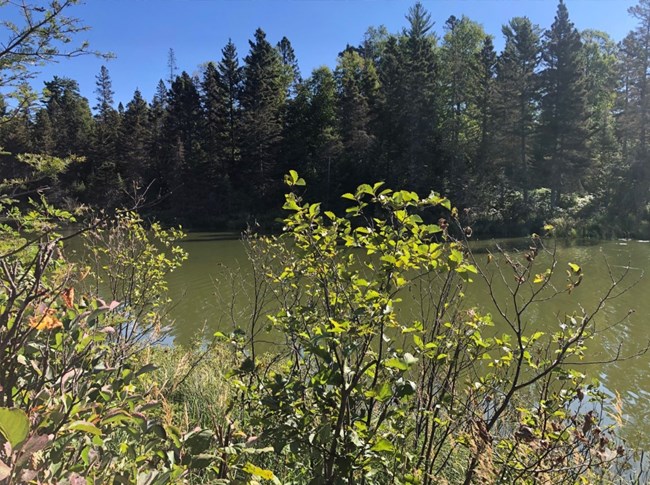
Photo courtesy of Lauren Isbell What are Harmful Algal Blooms?Cyanobacteria, also known as blue-green algae, are a type of bacteria that can photosynthesize, or convert sunlight into energy. (Cyanobacteria can be found in almost every terrestrial and aquatic habitat. They are some of the oldest organisms on Earth and are considered to be the first organisms to have released oxygen into the atmosphere.) Unfortunately, some cyanobacteria can produce toxins, called cyanotoxins, that can make people and animals sick. When conditions are right, cyanobacteria can reproduce rapidly and increase to form cyanobacterial blooms – or Harmful Algal Blooms (HABs). These blooms can last a few days, weeks, or longer, and are considered harmful when they contain cyanotoxins. What do harmful algal blooms look like?Not all algal blooms have cyanotoxins, so it is difficult to tell if it is harmful by looking at it. HABs can be a variety of colors such as green, blue-green, blue, brown, yellow, white, purple, or red. HABs can look like scums in the water and may have small flecks, foams, or sometimes globs and mats floating in it. The water can also look like it has spilled paint or a green sheen on the surface. Common ColorsCyanobacterial blooms can be a variety of colors: green, blue-green, blue, brown, yellow, white, purple, and red. 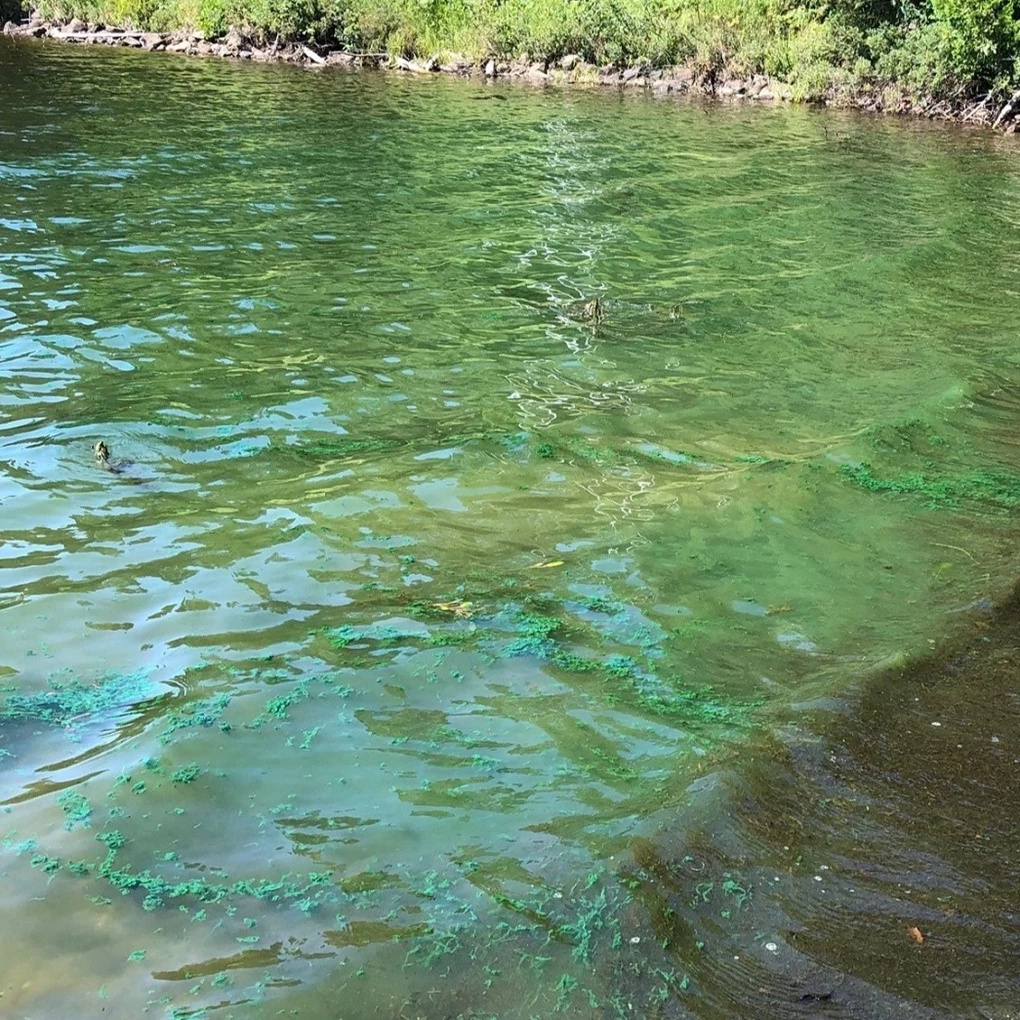
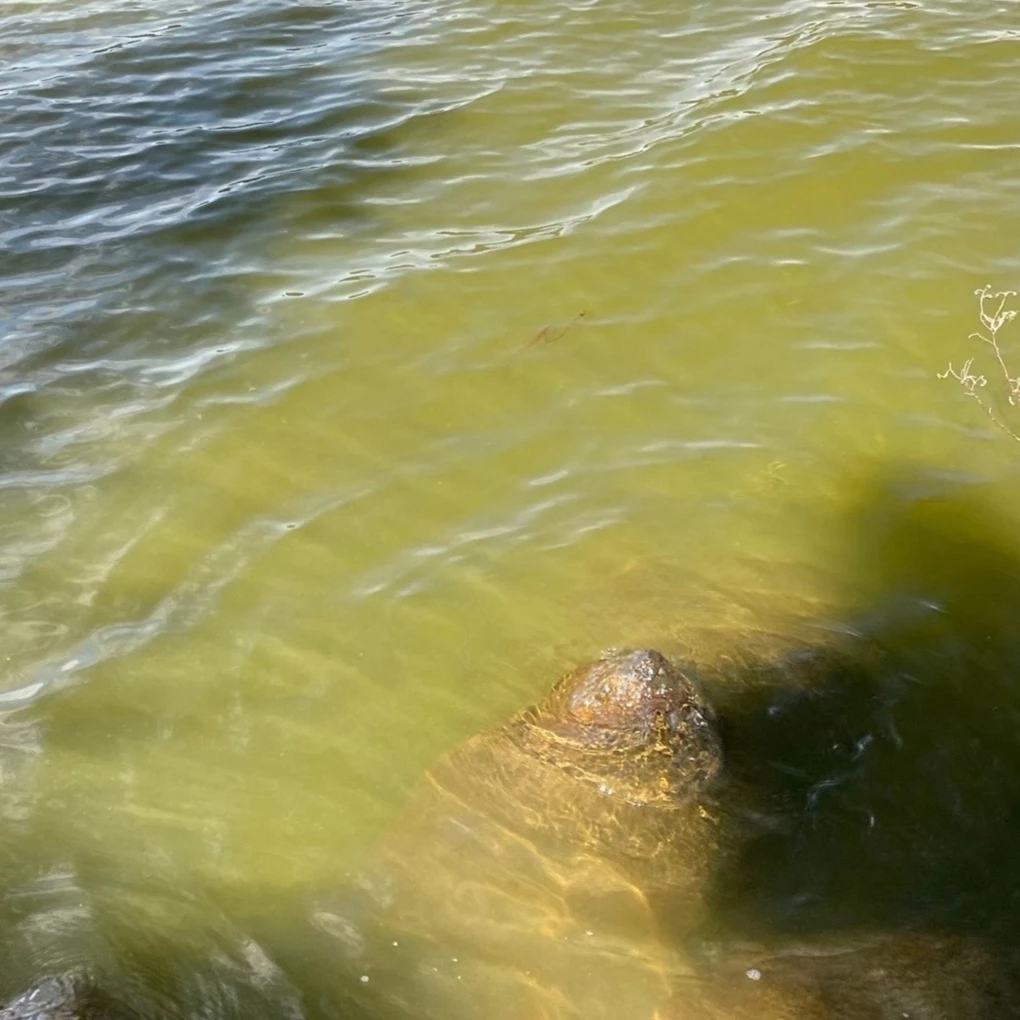
Left image
Right image
Flecks & GlobsCyanobacteria can look like scum in the water and may have small flecks, foams, or sometimes globs and mats floating in it. 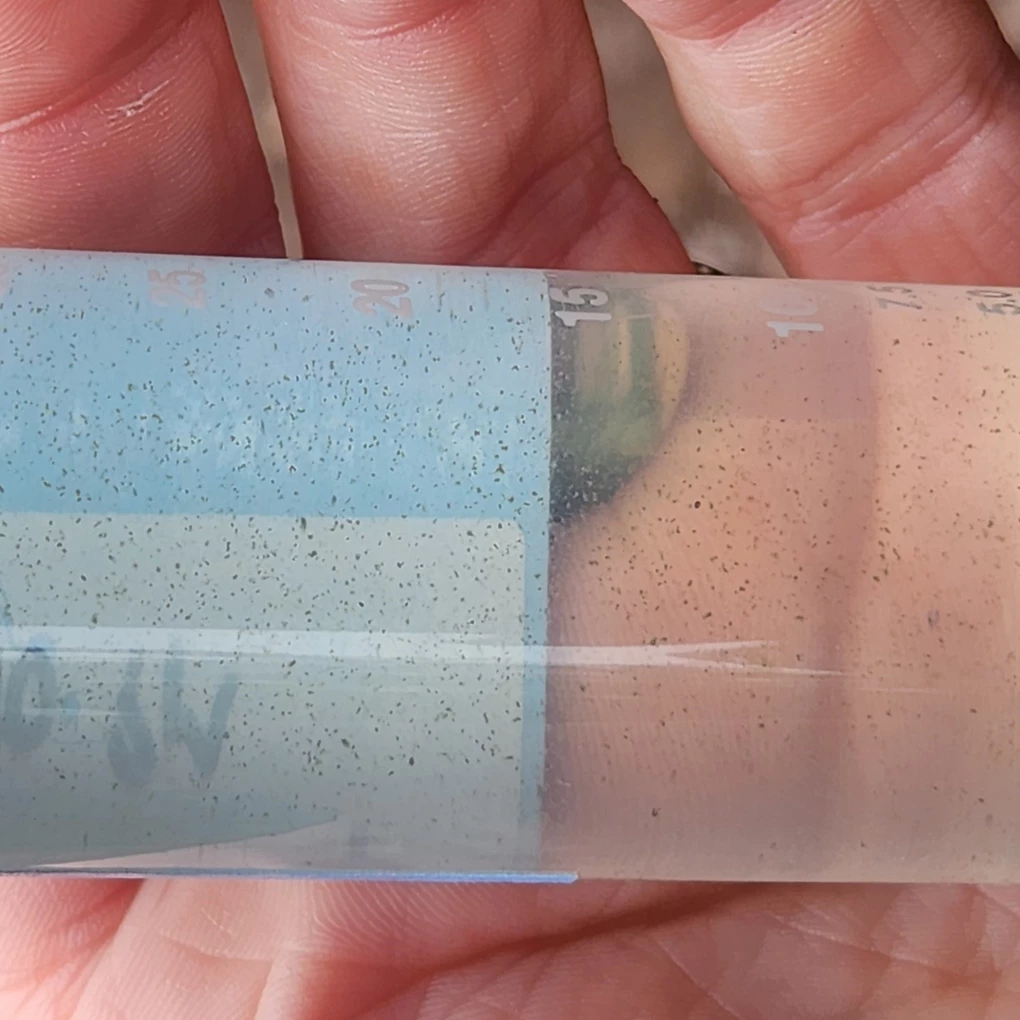
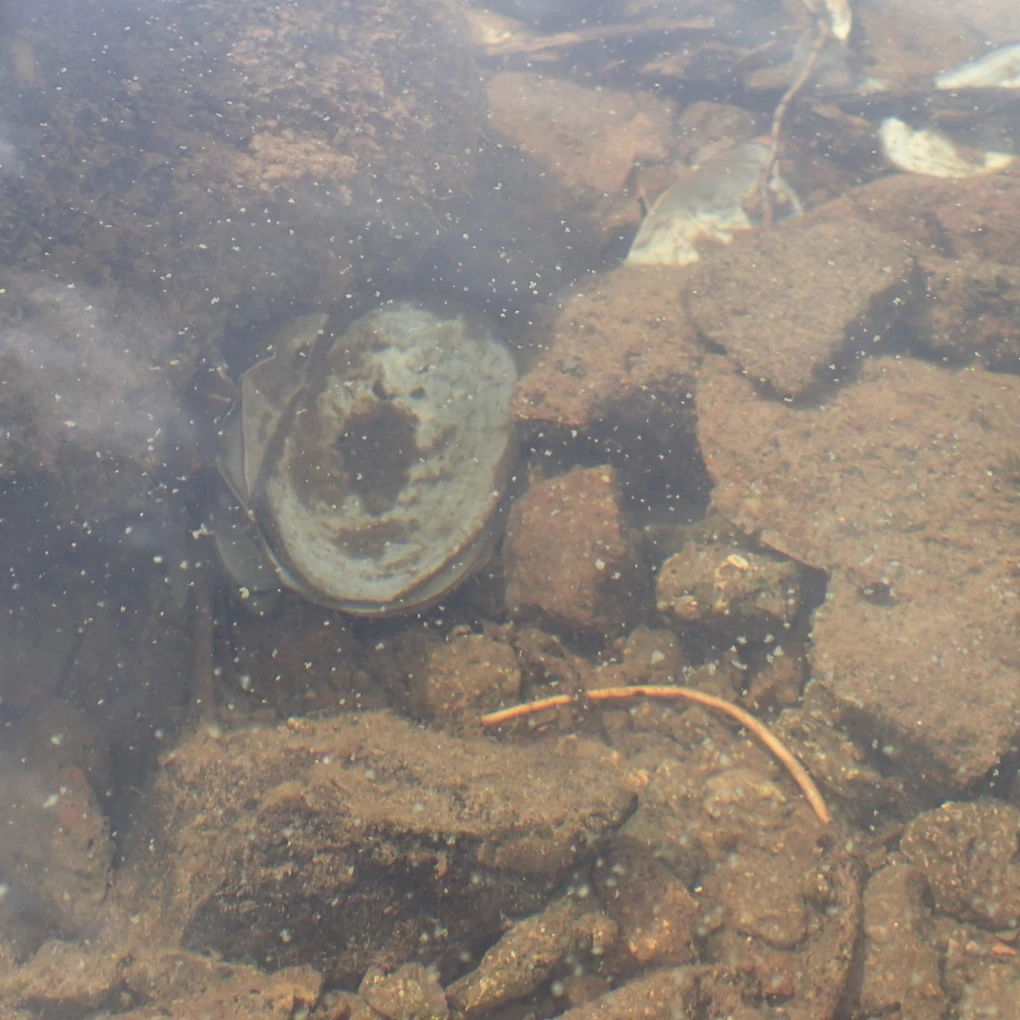
Left image
Right image
Mats & Paint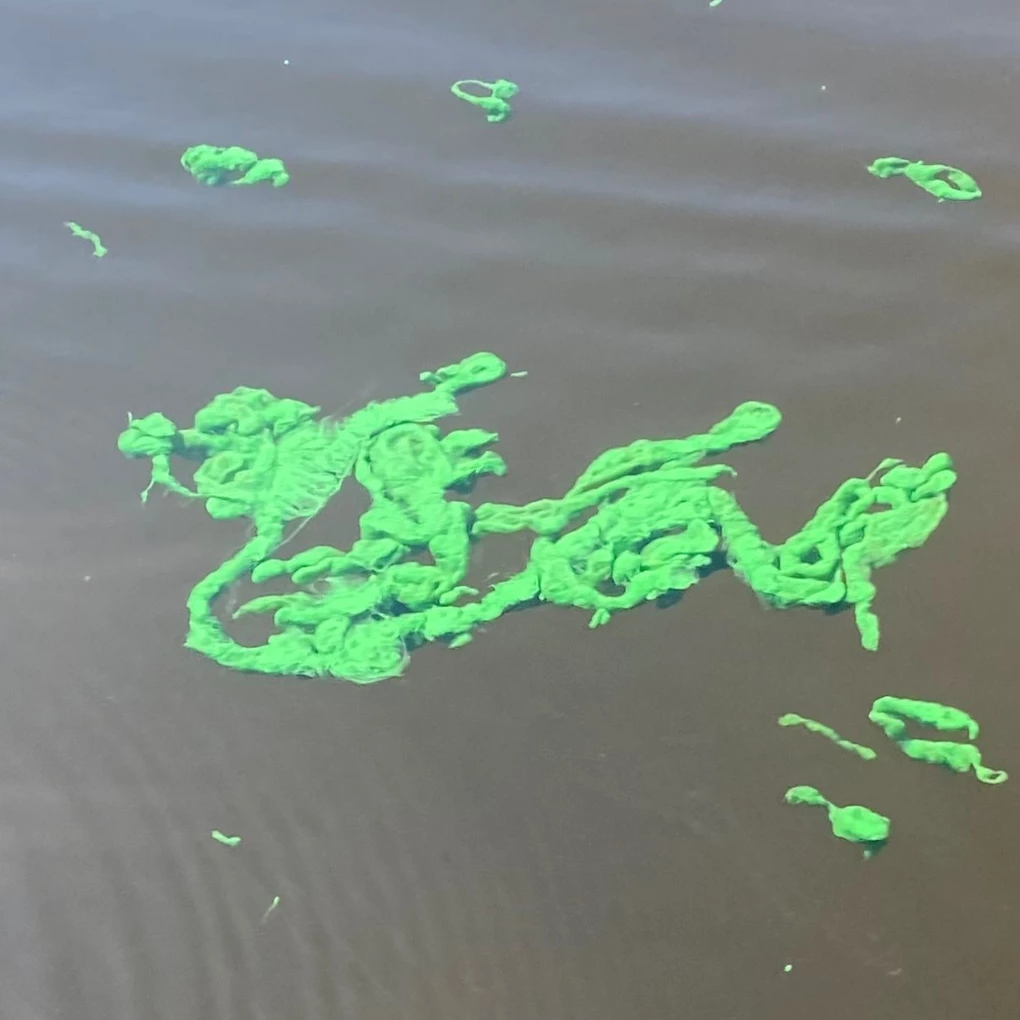
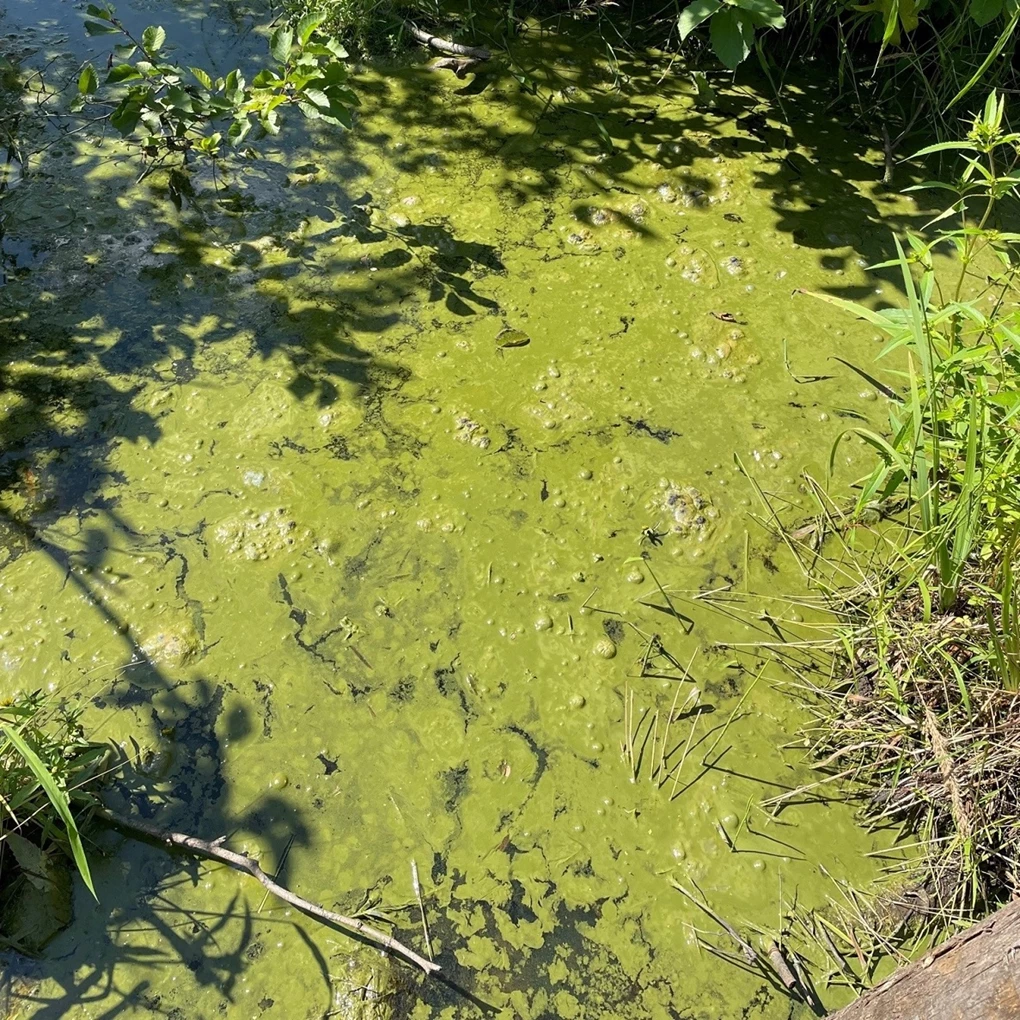
Left image
Right image
HAB Frequently Asked Questions A HAB can happen when the water temperature is warm, the lake is calm, and there is a high level of nutrients, like phosphorus or nitrogen, in it. High levels of nutrients can come from pollution such as lawn and farm fertilizers, malfunctioning septic systems, animal manure, storm water runoff, and sewage treatment plant discharges. Invasive zebra and quagga mussels help make water conditions right for HABs; they eat algae but release cyanobacteria back into the water.
HABs typically occur in Michigan during the summer months and into the fall. A bloom can last days to months. Blooms can change in size, severity, and location within the same day. Blooms may disappear on a waterbody but then form again weeks later.
You cannot tell if an algal bloom is harmful just by looking at it. Take pictures and give them to a Ranger at the Visitor Center or email them to the park. Stay out of the water and do not let children play in the water or near the shoreline where you suspect a HAB. Unless the bloom covers a large part of the lake, people can limit their risk of contact with it by using an unaffected part of the lake.
If you need drinking water, it is not recommended to filter water in any areas where there is surface scum, strong odors, or other evidence of a significant bloom. Treating, filtering, and boiling water containing cyanotoxins can increase the toxicity. Blooms move around depending on wind and rain - filter water from places where blooms are not present or a different water source. Given the consistently low toxin levels of blooms on Isle Royale, it is low risk to filter water from relatively clear areas of an impacted water source. If advisories, signs, or closing are posted about the possibility or presence of a HAB, pay attention to the advisory or warning about using the water. Symptoms of illness from cyanotoxins may appear within hours to days. If symptoms do appear, the severity will depend on the type of cyanotoxins with which the person had contact, how the person had contact (touching, swallowing), and how long the contact lasted.Skin contact with HABs may cause irritation such as rashes, hives, or skin blisters. It may also cause runny eyes and nose or asthma-like symptoms. Swallowing large amounts of water having cyanotoxins in it may cause stomach pain, vomiting, diarrhea, weakness, numbness, headaches, dizziness, or difficulty breathing. Frequently swallowing or swallowing large amounts of cyanotoxins can harm the liver or kidneys.If you may have had contact with or swallowed water containing cyanotoxins, and have any of the symptoms listed above, talk to your doctor or call Poison Control. If symptoms are severe, get emergency medical attention as soon as possible.
When a HAB is present, the meat of fish (the filet), and especially the guts and organs (liver, kidney, etc.) may have small amounts of cyanotoxins. The amount of cyanotoxins found in fish depends on several factors, including how badly or for how long the cyanobacteria has been blooming in the area where the fish are caught. Eating only the filets (and not the guts) lowers the potential health risk of eating fish from areas affected by HABs and from other chemicals that might be found in them. The guts should be thrown away and filets should be rinsed with fresh water before cooking. For more information, follow the State of Michigan’s ‘Eat Safe Fish’ Guide.
Park staff is actively monitoring for cyanobacterial blooms in inland waterbodies across Isle Royale. Help the park by reporting all suspected blooms to the Visitor Center. If a bloom is present at a water body, a water sample is collected and tested for toxins. If the cyanobacterial bloom is significant, a separate sample may be collected and sent to the Michigan Department of Health and Human Services (MDHHS) for further testing. If any tests fail drinking water guidelines (1.6 ug/L microcystins or 3.0 ug/L cylindrospermopsin) established by the Environmental Protection Agency, the public is notified through closures communicated through posted signs, park website, and the visitor centers.
Follow the rules and regulations regarding water resources in the Greenstone Newspaper and on your permit while you are visiting Isle Royale National Park, especially regarding cookware cleaning, bathing, and human waste disposal. Take care not to spread aquatic invasive species to inland lakes while boating, fishing, and using water filters by wiping down all equipment before transport.When you return home, consider using phosphate-free detergents, applying fertilizers only when necessary and at the recommended amount, and volunteering in local watershed protection efforts. In some areas, community members can take part in monitoring programs that test and assess local water quality. Contact nearby lake associations, the local watershed council, or the local water resources commissioner’s office for opportunities in your area. Learn more about protecting and restoring the Great Lakes from the Great Lakes Restoration Initiative.

NPS Photo Monitoring DevicesPark staff have deployed Solid Phase Adsorption Toxin Tracking (SPATT) sampler devices at interior lakes throughout the park. SPATT samplers appear on the surface of the water as a small, floating buoy or barbell-type structure, connected to a rope or chain. Below the surface of the water, resin-filled bags stand ready to adsorb HABs that pass through the device’s brightly colored collection ring.To protect the integrity of HAB sampling and research, please refrain from disturbing a SPATT sampler. Further Examples |
Last updated: August 28, 2025
